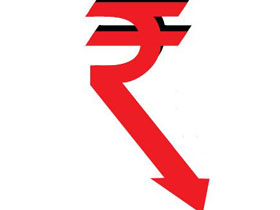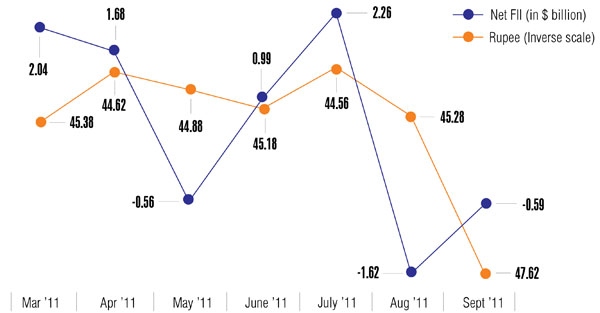
How The Rupee Runs
The Indian rupee is likely to be volatile for a while, spelling bad news for companies that have not hedged currency risk
A sudden wave of volatility in the Indian rupee has increased the degree of risk for companies and the financial system as a whole. Over the past three months, the rupee has fallen 12 percent against the dollar and could even slip to the 52 mark if European debt worries persist. Though many analysts foresee the currency clawing back to around 46, they believe that will take a while.

One reason for the rupee’s free fall is the RBI’s hands off approach in the past two years, virtually allowing the currency to float, as economist Ajay Shah points out on his blog. Shah says that while the currency was expected to move by around 8.6 percent, it has in fact moved by more than 12 percent in three months.
This is worrying importers and companies that have borrowed in foreign currencies. Worst hit are the oil refiners and marketers as their crude oil import bill will rise. Oil marketer Hindustan Petroleum Corporation (HPCL)’s director of finance, B. Mukherjee, says, “Hedging currency risk is part of normal treasury operations. The external commercial borrowings are hedged on an ongoing basis. With the dollar going up so strongly, they have been fully covered”.

Many Indian companies have also borrowed heavily in foreign currencies. In many cases these borrowings are short term in nature. According to a Crisil report, these short-term borrowings add up to about $88 billion. Companies expecting maturities soon could be badly hurt by the falling rupee. Those who are hedged will be saved, but if the volatility persists, hedging will become expensive.
(This story appears in the 21 October, 2011 issue of Forbes India. To visit our Archives, click here.)
Post Your Comment














